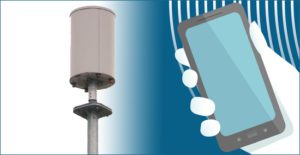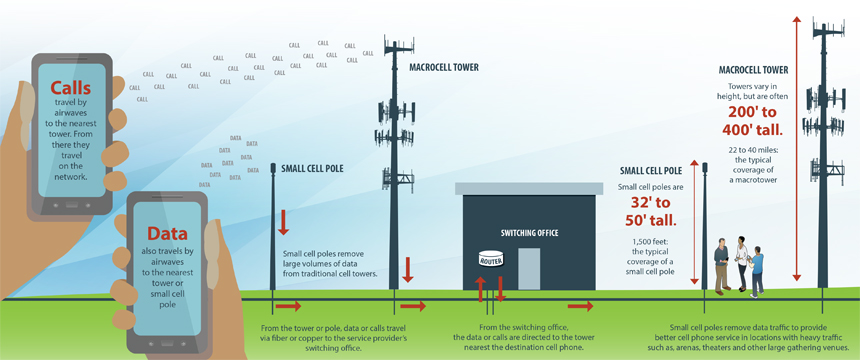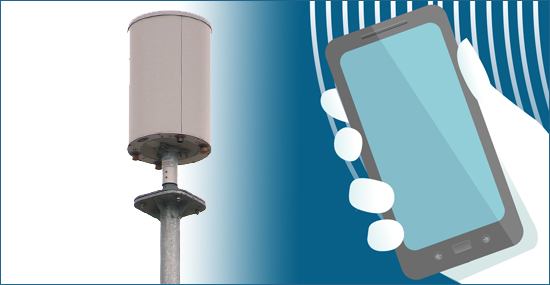Is your data service slow in big crowds? SDN is fixing that
This piece is presented by SDN Communications.
This summer, SDN Communications will begin deploying the newest technology to satisfy wireless users’ insatiable appetite for more data. Small cells will help users browse the internet, stream video and soon send pictures and video to 911.
The first installation likely will happen at the W.H. Lyon Fairgrounds in Sioux Falls within the next 90 days. Aberdeen, Brookings, Yankton and Sioux City also are on tap for the improved wireless data coverage.
Verizon Wireless contracted with SDN for the deployment, but Sprint, AT&T and other prominent wireless companies are among those using small cells and related technologies to move a growing volume of electronic data in congested and high-usage parts of their service areas.
A small cell is a low-powered, radio-access node within a bigger service footprint. However, the definition can vary from company to company.
Generally, a small cell or micro cell is a smaller version of a macro cellular tower, said J.J. Anderson, a wholesale account executive for SDN Communications in Sioux Falls. When in place, the equipment receives data transmissions while the larger towers receive phone calls.
“The goal for carriers is to improve the user experience for their customers,” Anderson said. “They place small cells near areas where people congregate, such as college campuses, hospitals and downtown shopping areas. The technology off-loads the data traffic in those high-density areas and reduces the strain on the macro tower. That improves the experience for users in both the high-density areas as well as the broader community.”
The addition of small cells can help increase capacity in high-traffic areas and extend coverage to hard-to-reach locations, according to Verizon Wireless. The company started deploying small cells in the United States in 2013.
As the use of small cells and related technology expands, so does the role of broadband service providers such as SDN.
Keep in mind that streaming a video or making a call on a wireless device is only “wireless” until it reaches a wireless node, such as a macro tower or small cell pole. At that point, it depends heavily on wired infrastructure for the middle portion of the trip.
A call made on a wireless device, for example, typically travels by airwaves to the nearest tower or wireless access point. From there, the call travels via fiber or copper to the service provider’s switching office. Calls usually remain on a wired, underground path until they reach their destination, which could be another wireless tower if the called party is using a mobile phone.
As more people rely on mobile devices as their primary means of communication, networks become busier and require infrastructure improvements to meet growing bandwidth demands. Carriers need ways to efficiently support the large volume of data. Small cell technology and in-building picocells placed in arenas, theaters, and other large gathering venues represent a new and essential layer in cellular technology.
Despite the benefits to mobile users, small cells often face deployment challenges. Many local governments had to update existing rules to accommodate the new technology. Recognizing the limited environmental and cultural impact of small cell technology, the federal government has taken steps to streamline the approval process to spur the deployment of this important technology.
Radio and antenna equipment that receive small cell signals can be mounted to poles, lampposts or attached to building walls. The rollout of small cell technology has been concentrated in large metro areas but is becoming increasingly common in midsize and smaller markets. Mobile traffic is projected to keep growing, meaning there will be more small cells in the works.
According to Cisco, traffic from wireless and mobile devices will exceed traffic from wired devices by 2018. This forecast is part of Cisco’s Visual Networking Index, an ongoing initiative to track and forecast the impact of visual networking applications.
In 2013, wired devices accounted for 56 percent of all IP traffic. By 2018, wired devices will account for 39 percent of IP traffic, while wi-fi and mobile devices will account for 61 percent of IP traffic, Cisco forecasts.
The incredible growth of data generated by mobile technologies puts an increased performance burden on mobile carriers. It also requires more capacity from service providers such as SDN that provide backhaul to the wireless carriers.
Business clients and mobile users relying on SDN’s network can count on the company to keep its network operating at a high level. SDN is constantly upgrading its infrastructure to keep pace with advances in technology and the growth in bandwidth demand.
Fascinated about how small cells could improve connectivity in your area? Check out SDN’s small cell resource page.









